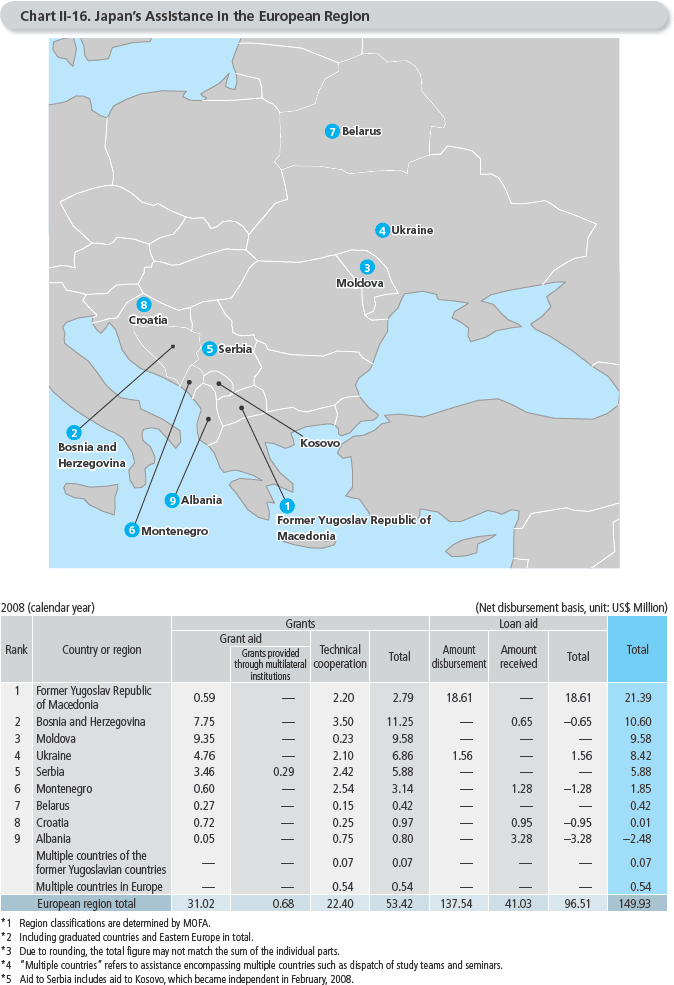Japan's Official Development Assistance White Paper 2009
8. Europe
•Approximately US$149.93 million (approximately US$190.96 million)
•Approximately 2.2% of total bilateral aid (approximately 1.3%)
The Baltic countries and the Central and Eastern European countries have shed the former socialist system and have generally achieved market-based economies and democratization. However, the degree of development varies greatly among these countries. Ten Central and Eastern European countries have already acceded to the EU (Poland, Hungary, Czech Republic, Slovak Republic, Slovenia, Latvia, Lithuania, Estonia, Romania, and Bulgaria) and are now moving from being recipient to donor countries, as the DAC list excluded them as recipients and the countries have shown increased GNI per capita.
Despite disparities in the level of development between nations, Western Balkan states such as Croatia and Macedonia aim to accede to the EU as soon as possible, and as such are tackling the issue of reform. Meanwhile, former Soviet states such as Ukraine and Moldova face the issue of sustainable economic development with a market economy. In addition, the development situation in the region is diversifying, as countries such as Kosovo are working on national development as newly independent nations.
<Japan's Efforts>
As the Baltic countries and the Central and Eastern European countries have developed economically, the role of Japan's assistance in this region is also changing. Eight of the nations that have attained EU membership—excluding Romania and Bulgaria—are no longer recipients of Japanese ODA and began to fulfill their international role as donor countries. Japan therein conducts efforts to share its experiences as an ODA providing country.
For the Western Balkan region and former Soviet states, which are still amidst economic development, it is necessary to continue to provide support in accordance with each nation's level of development and needs. In Serbia, Japan has allotted the focus of its assistance to infrastructure development—such as for electric power, water supply, and transportation—and the health and medical sector, while also dispatching specialists and conducting training to promote investments, small- to medium-sized enterprises, and trade. In Bosnia and Herzegovina, Japan provides assistance such as for cultural aspects, for ethnic reconciliation, for returnees, and for landmine victims. Japan continues to support the efforts of Ukraine and Moldova for further democratization and transition to a market economy, and it works to raise the standard of living for the people through the improvement of medical and agricultural equipment and machinery, and other assistance.

Photo: dpa/PANA
Greater Tirana Sewerage System Improvement Project (Albania)
Since its establishment of a democratic administration in 1992, Albania has gradually achieved economic growth via such means as ample assistance from European countries, the United States, and international organizations. However, regional development has led to an increase in the population, resulting in rising domestic and industrial drainage. At the same time, the lagging development of sewer systems has caused sewage to flow into Lana River, which runs through the center of the city, and into other surrounding areas. The resulting accumulation of garbage in rivers and foul odor worsens the sanitary and living environments of residents. Thereupon, Japan has utilized approximately ¥11.1 billion in ODA loans to develop sewage facilities such as sewage treatment plants, improve the quality of groundwater and water in rivers, and assist in bettering the living environment of residents living in such areas.

